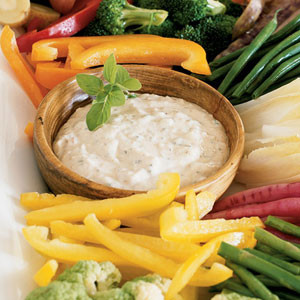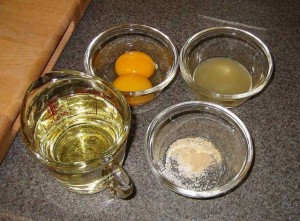Australia still has an egg problem.
Or at least a Salmonella problem.
According to the Canberra Times, five people have been hospitalized and more than 20 are sick as investigations continue into one of the largest spates of food poisoning recorded in the Australian capital in recent years.
But it’s nothing new; and is an embarrassment to the Australian capital which  routinely preaches food safety adherence.
routinely preaches food safety adherence.
In Dec. 2011, Silo Bakery in Canberra was forced to shut for three days after ACT Health detected salmonella in mayonnaise used in a chicken roll.
It is believed raw egg in the mayonnaise was to blame for the salmonella outbreak which allegedly affected more than a dozen people.
At least 22 people were sickened with salmonella in Dec. at the Canberra bakery. In the aftermath of the outbreak, Silo co-owner Leanne Gray said officials have advised buying commercial mayonnaise or using pasteurized eggs. Her response: “That’s the foulest thing you’ve ever seen, so I said no, I won’t.”
Bye bye.
Seventeen months later and The Canberra Times has received reports from numerous readers who have fallen ill as part of a Salmonella outbreak in recent days, after eating at the newly opened The Copa Brazilian Churrasco in Dickson.
A spokesman from The Copa – open for less than a week – confirmed it was working with a team from ACT Health, having voluntarily closed its doors this week citing ventilation exhaust issues.
Chief Health Officer Paul Kelly said he was first notified by Calvary Hospital staff about 10am on Monday regarding the influx of patients, who have now been confirmed as having contracted salmonella.
”It’s usually from food and the most likely thing is it’s probably egg-based,” he said. ”But it can be chicken, it can be salads.”
Dr Kelly said there were 22 reported cases and five had been hospitalised as of Tuesday, but he said ”there certainly will be more.”
He said it appeared those affected by food poisoning symptoms had eaten at the same restaurant, where a buffet-style meal had been served.
He confirmed inspections were being carried out on site and investigators had taken swabs of surfaces and samples of available food from the weekend.
Dr Kelly said it was ”one of the biggest” cases in recent years in Canberra, which has now recorded five widespread cases of food poisoning since late  2010. ”We’ve seen four of a similar size,” he said. ”Each of them have been associated with egg.”
2010. ”We’ve seen four of a similar size,” he said. ”Each of them have been associated with egg.”
Marcela Valenzuela described the emergency department of Calvary Hospital as ”like a war zone” with around 20 people separated from the other emergency patients in a makeshift ward on drips, antibiotics and some even morphine.
Her mother was first admitted with food poisoning on Monday morning, but like many others was treated, sent home, then admitted again.
Ms Valenzuela and her mother were part of a group of 10 dining at the Copa Brazilian Churrasco on Saturday night, with only Ms Valenzuela and friend Carlos Obando escaping illness – as both happened to be on antibiotics. The first Ms Valenzuela knew something was wrong was when a friend messaged her on Monday to ask if she was feeling OK.
”She said, ‘they’re falling like flies, there are a few people already in hospital’ … I rang my mum and she goes, ‘I’ve been up all night with diarrhea and vomiting’, so we brought her in [to hospital],” she said. ”I can’t blame [the restaurant] because we don’t know yet where it comes from – maybe it was something that they bought that was already contaminated.”
She said the scenario could have been worse had the fully booked restaurant not been forced to close around 7pm on Saturday due to faulty exhaust fans, with patrons not charged for their meals.
But the free dinner was not enough to make up for the immediate medical costs. ”Who’s going to pay the bill here?” Mr Obando asked.
A table of raw-egg related outbreaks in Australia is available at http://bites.ksu.edu/raw-egg-related-outbreaks-australia.
 on Monday afternoon and said no comment would be made until the public release of the official report.
on Monday afternoon and said no comment would be made until the public release of the official report. days at the hospital for eating something that had salmonella at your restaurant.”
days at the hospital for eating something that had salmonella at your restaurant.”










 ”scores on doors” scheme for food outlets and called for a voluntary trial of the scheme.
”scores on doors” scheme for food outlets and called for a voluntary trial of the scheme..jpeg) incentives for food service operators. Disclosure systems are common in developed countries but are inconsistently used, possibly because previous research has not determined the best format for disclosing inspection results. This study was conducted to develop a consistent, compelling, and trusted inspection disclosure system for New Zealand. Existing international and national disclosure systems were evaluated. Two cards, a letter grade (A, B, C, or F) and a gauge (speedometer style), were designed to represent a restaurant’s inspection result and were provided to 371 premises in six districts for 3 months. Operators (n = 269) and consumers (n = 991) were interviewed to determine which card design best communicated inspection results. Less than half of the consumers noticed cards before entering the premises; these data indicated that the letter attracted more initial attention (78%) than the gauge (45%). Fifty-eight percent (38) of the operators with the gauge preferred the letter; and 79% (47) of the operators with letter preferred the letter. Eighty-eight percent (133) of the consumers in gauge districts preferred the letter, and 72% (161) of those in letter districts preferring the letter. Based on these data, the letter method was recommended for a national disclosure system for New Zealand.
incentives for food service operators. Disclosure systems are common in developed countries but are inconsistently used, possibly because previous research has not determined the best format for disclosing inspection results. This study was conducted to develop a consistent, compelling, and trusted inspection disclosure system for New Zealand. Existing international and national disclosure systems were evaluated. Two cards, a letter grade (A, B, C, or F) and a gauge (speedometer style), were designed to represent a restaurant’s inspection result and were provided to 371 premises in six districts for 3 months. Operators (n = 269) and consumers (n = 991) were interviewed to determine which card design best communicated inspection results. Less than half of the consumers noticed cards before entering the premises; these data indicated that the letter attracted more initial attention (78%) than the gauge (45%). Fifty-eight percent (38) of the operators with the gauge preferred the letter; and 79% (47) of the operators with letter preferred the letter. Eighty-eight percent (133) of the consumers in gauge districts preferred the letter, and 72% (161) of those in letter districts preferring the letter. Based on these data, the letter method was recommended for a national disclosure system for New Zealand. a renovation and have improved their practices to meet the ACT’s legal guidelines.
a renovation and have improved their practices to meet the ACT’s legal guidelines.